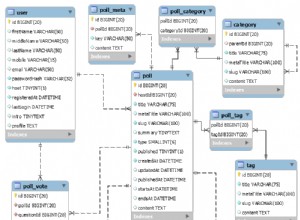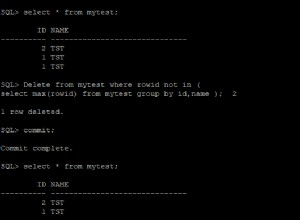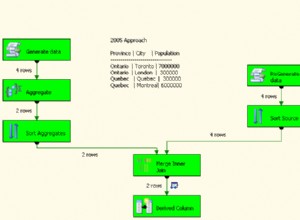Função mais simples
Em primeiro lugar, você pode simplificar bastante sua função. Esta função SQL mais simples faz o mesmo:
CREATE OR REPLACE FUNCTION f_tree(_rev int)
RETURNS TABLE(id int, parent_id int, depth int) AS
$func$
WITH RECURSIVE tree_list AS (
SELECT t.id, t.parent_id, 1 -- AS depth
FROM tree t
WHERE t.id = $1
UNION ALL -- no point using UNION
SELECT t.id, t.parent_id, r.depth + 1
FROM tree_list r
JOIN tree t ON t.id = r.parent_id
)
SELECT t.id, t.parent_id, t.depth
FROM tree_list t
ORDER BY t.id;
$func$ LANGUAGE sql;
Ligar:
select * from f_tree(15);
-
Você poderia use plpgsql, pode ser ligeiramente benéfico para descontar o plano de consulta em versões anteriores ao PostgreSQL 9.2. Mas você anulou o único benefício teórico usando SQL dinâmico sem necessidade. Isso não faz o menor sentido. Simplifique para SQL simples.
-
UseUNION ALLem vez deUNION, mais barato, pois não pode haver enganos por design.
Apenas SQL
Obviamente, você pode substituir isso por SQL simples:
WITH RECURSIVE tree_list AS (
SELECT t.id, t.parent_id, 1 AS depth
FROM tree t
WHERE t.id = 15 -- enter parameter here
UNION ALL
SELECT t.id, t.parent_id, r.depth + 1
FROM tree_list r
JOIN tree t ON t.id = r.parent_id
)
SELECT t.id, t.parent_id, t.depth
FROM tree_list t
ORDER BY t.id;
Faz o mesmo.
VER
Agora, o
VIEW é uma questão trivial:CREATE OR REPLACE VIEW v_tree15 AS
WITH RECURSIVE tree_list AS (
SELECT t.id, t.parent_id, 1 AS depth
FROM tree t
WHERE t.id <= 15 -- only detail to change
UNION ALL
SELECT t.id, t.parent_id, r.depth + 1
FROM tree_list r
JOIN tree t ON t.id = r.parent_id
)
SELECT t.id, t.parent_id, t.depth
FROM tree_list t
ORDER BY t.id;
O resultado não faz muito sentido para mim, mas a questão não define nada mais sensato..




